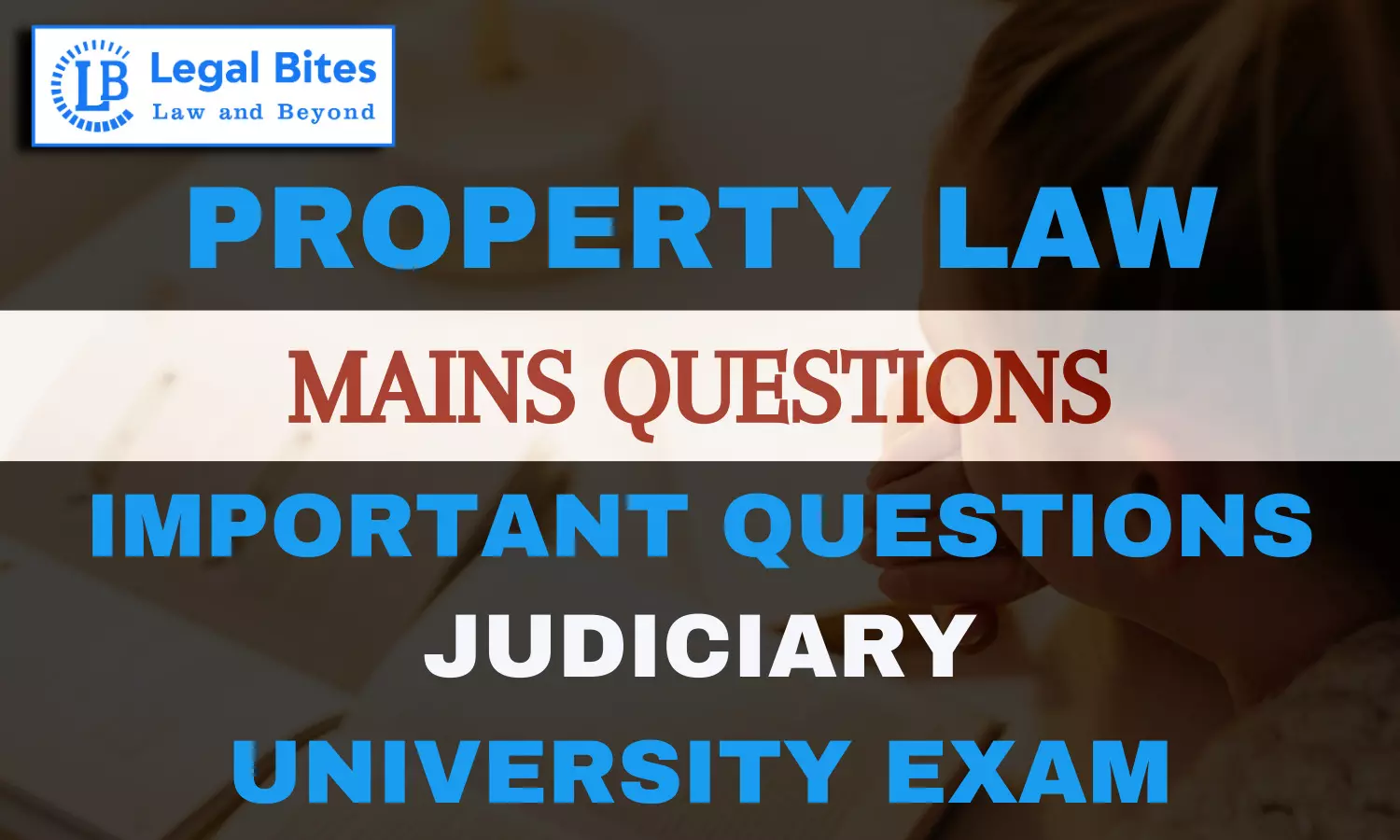Does the Transfer of Property Act make an exception to the general rule that a person cannot confer a better title to the property than he himself has in it? If so, how do you justify the exceptions?
Find the answer to the mains question of Property Law only on Legal Bites.

Question: Does the Transfer of Property Act make an exception to the general rule that a person cannot confer a better title to the property than he himself has in it? If so, how do you justify the exceptions? [UPJS 2013]Find the answer to the mains question of Property Law only on Legal Bites. [Does the Transfer of Property Act make an exception to the general rule that a person cannot confer a better title to the property than he himself has in it? If so, how do you justify...
Question: Does the Transfer of Property Act make an exception to the general rule that a person cannot confer a better title to the property than he himself has in it? If so, how do you justify the exceptions? [UPJS 2013]
Find the answer to the mains question of Property Law only on Legal Bites. [Does the Transfer of Property Act make an exception to the general rule that a person cannot confer a better title to the property than he himself has in it? If so, how do you justify the exceptions? ]
Answer
As a general principle a person cannot transfer a superior title to property than what he holds i.e. ‘Nemo Dat Quod Non Habet‘.
Section 41 of the Transfer of Property Act is a well-accepted exception to this general principle. The transfer of property to an ostensible owner is dealt with under Section 41 of the Transfer of Property Act, 1882. According to it, when a person acts on the express or implied consent of a person who is vested in a certain immovable property, that person is deemed the ‘ostensible owner’ of that property.
A third party who (after due diligence) engages in a bonafide manner with an ostensible owner may be able to obtain a valid title to the property as against the real owner if the real owner, for example, entrusts him with the title papers and makes him an ostensible owner.
To make use of this Section, one must meet specific prerequisites. They’re as follows:
a) The ostensible owner of the property must be the person transferring it, which is the most important requirement.
b) The consent of the actual owner, whether express or implicit, is required.
c) The property must be exchanged for payment to the ostensible owner.
d) The transferee must exercise reasonable caution when considering the transferor's control over the property and whether they had bona fide intentions while making the transfer.
Section 41 of the Transfer of Property Act is governed by the principle of estoppel against the real owner. As per the rule of estoppel when the real owner of property represents some other person as the owner to third parties, and the latter person acts on that representation, the real owner cannot rescind later from his representation. The House of Lords articulated this concept in Cairncross v Lorimer (1860), as a party, either by words or conduct, representing to consensually perform or abstain from doing an act, and the other party acts on that representation, the former will have to stick to his representation.

Mayank Shekhar
Mayank is an alumnus of the prestigious Faculty of Law, Delhi University. Under his leadership, Legal Bites has been researching and developing resources through blogging, educational resources, competitions, and seminars.
